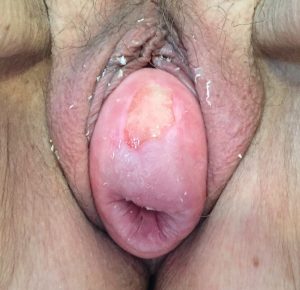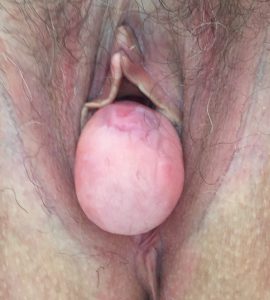Prolapse refers to the displacement of the uterus or adjacent pelvic organs from their normal anatomical positions within the pelvis. The pelvic floor is a muscular diaphragm which assists in providing support to the bladder, rectum, vagina and uterus. Through childbirth the various ligaments and fascial supports are damaged and with time weakened so that the genital organs are no longer supported within the pelvis. This usually occurs around the time of menopause when the lack of oestrogens is often a contributing factor to prolapse as are other factors such as chronic cough and constipation.
Symptoms of prolapse include a lump at the vaginal entrance which may be the uterus, the bladder or rectum bulging through the vagina particularly when the patient is in the upright posture. Other symptoms of pelvic organ prolapse include urinary incontinence and less commonly poor bowel control. Vaginal relaxation with an open gaping introitus can be responsible for a lack of sensation particularly during sexual intercourse.
Pelvic organ prolapse once established usually deteriorates further with the passage of time and requires surgical correction. Surgery consists of a pelvic floor reconstruction which includes a vaginal hysterectomy together with a repair of the anterior vaginal wall (bladder), the posterior vaginal wall (bowel) and also the entrance to the vagina and perineum. This can be performed under a spinal block with the patient only lightly asleep as this allows a more favourable post-operative recovery. Hospitalization is usually for 3-4 days with complete recovery and return to work after 4-6 weeks.
When prolapse involves mainly the anterior vaginal wall and the bladder causing urinary incontinence, the preferred treatment is the insertion of a tension-free vaginal tape (TVT) below the urethra and bladder neck to provide the appropriate support.
Total prolapse of uterus, bladder and bowel. Complete prolapse of bladder in patient
Ulcer on anterior vaginal wall from long causing incontinence and bladder infections.
standing vaginal pessary.

